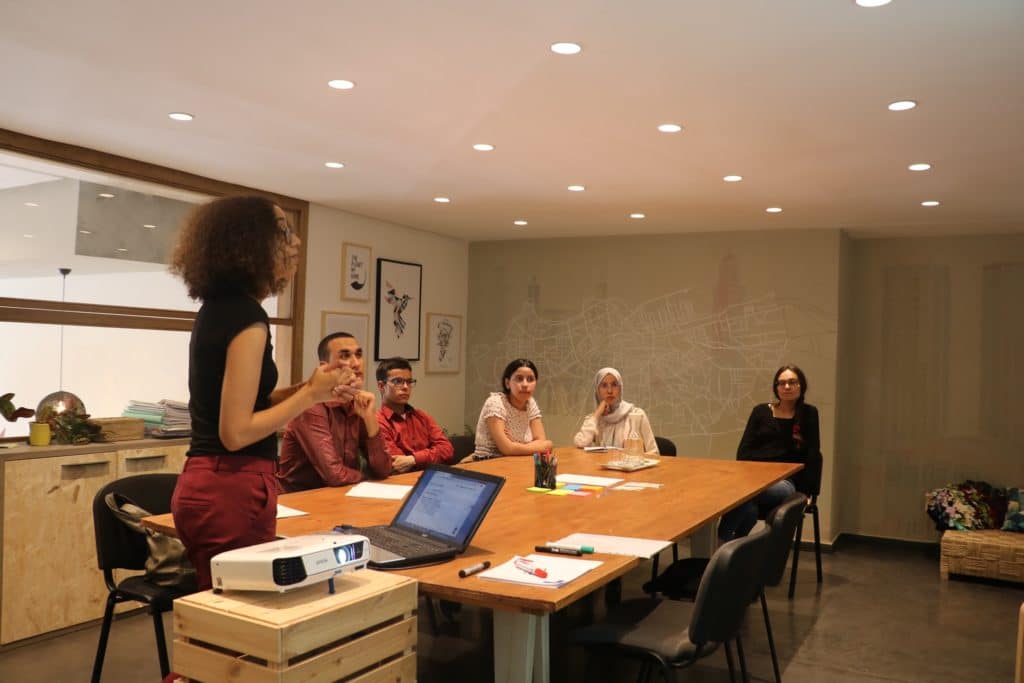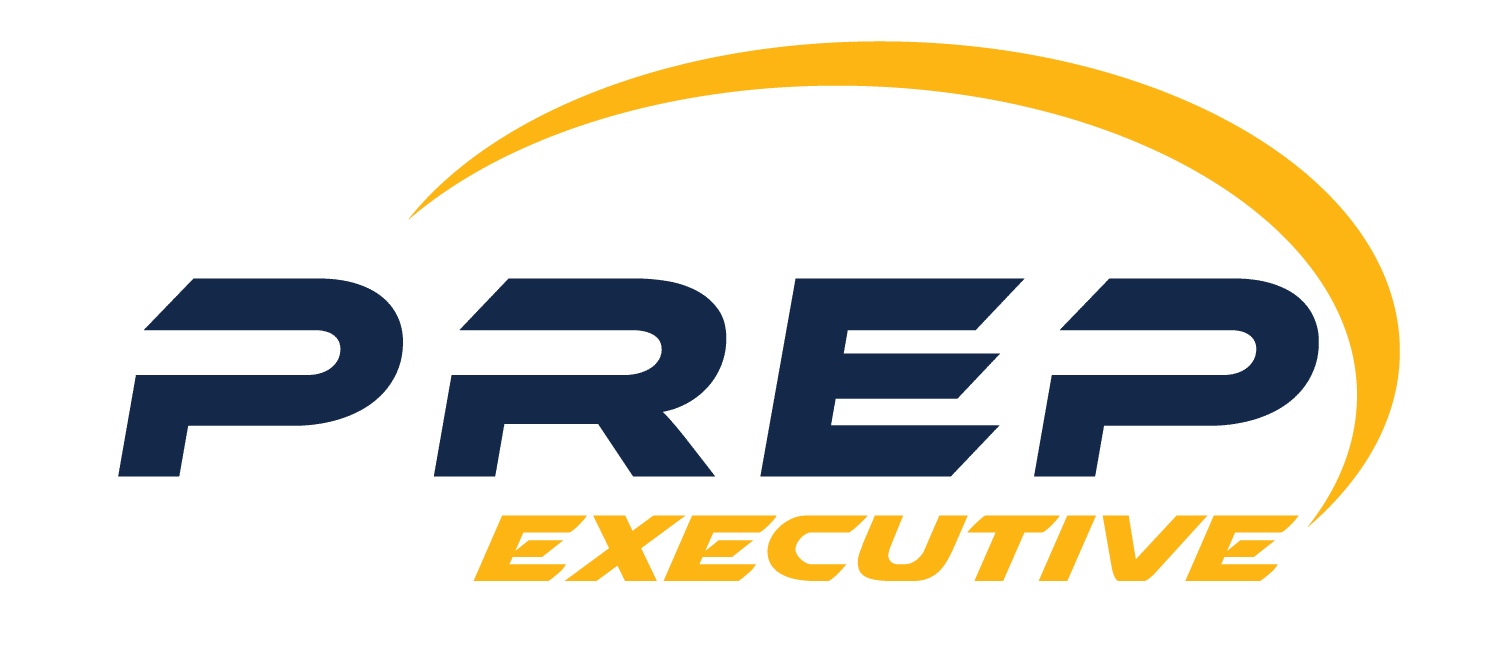- An organizational chart
- Recommendations
- An interview
- Powerpoint slides
- Panel presentation
- Additional quantitative courses
- TOEFL/IELTS
Let’s tackle these requests one by one.
Organizational Chart
Not all, but a few, EMBA programs may request an organizational chart as an application requirement to understand where you are in the pecking order.
Here’s what MIT asks for:
“You will need to include a one or two page organizational chart that outlines the internal structure of your company. Please provide as much information as possible with the understanding that some information may be privileged. Example charts are available in the application.”
If you have an especially confusing title or are part of a very large company, you may be asked for one at some point in the process.
Recommendations
One of the standard application requirements is for 2 recommendations: one from a direct supervisor or line manager and one from another person.
Despite whatever complex situation is brewing at your office, it is in your best interest to submit a recommendation from your direct supervisor. If you cannot, you had better have a really good reason for not being able to (he doesn’t know that you are applying for your EMBA is not a valid reason).
If you are an entrepreneur, your direct supervisor recommendation can usually be submitted by an investor, chairman, or anyone to whom you are accountable.
Not accountable to anyone? Check with the admissions officer who would be best for the recommendation.
The second recommendation can come from someone who knows you in a professional capacity, but preferably a more senior person like a mentor or someone who is more senior than you but not your direct supervisor.
Many EMBA programs require electronic submittal of recommendations. Essentially, you include the recommender’s name and email on the website. They are then automatically sent a system-generated email with a special link to submit the recommendation. Ideally, you should not be involved in this process once you ask for a recommendation.
For Prep Executive Complete Plan applicants, we help you prepare and send the recommender “talking points.” These talking points include how you know each other, reflections on your leadership, and any key accomplishments you have had.
Talking points prime the recommender to write the right things and make it much easier for them to write the recommendation. Fortunately, you can follow a similar process even if you are applying without expert help.
You should avoid writing your own recommendation to be submitted on the recommender’s behalf.
The Interview

Image: Unsplash
Almost every EMBA program requires an interview, which may be conducted in person, over the phone, or by a local alum. Your interview may be with only one person or with two or three people.
If you are applying to an EMBA program sponsored by more than one university, each university has the right to request an interview.
Different programs have different requirements regarding when you can do the interview. Here are a few to show you how much requirements vary by program.
Kellogg (Northwestern): After submitting your application, you will receive a confirmation email and link to schedule an interview with an admissions officer. These interviews are mandatory and must take place on the campus to which you are applying (Evanston or Miami).
Columbia: Interviews are required for admission to Columbia Business School. Once your online application is complete and under review, you may be contacted by a member of the Admissions Office to schedule an on-campus interview. Please keep in mind: Interviews are by invitation only.
Wharton: An interview with a member of the Admissions Committee is required for all applicants to the Wharton MBA Program for Executives. You are strongly encouraged to schedule an interview before you complete your application, and you must have your interview scheduled by the application deadline. An early interview is strongly encouraged.
Duke: Interviews can take place at any point in the admissions process.
Be sure to check the requirements of your chosen EMBA program.
For EMBA programs with invitation-only interviews scheduled after your application has been submitted, you are one step closer to getting in because they liked your application. From that point, the interview is the deciding factor for your acceptance.
At Prep Executive, we research potential interview questions and go through a 1-hour mock phone interview with applicants that select our Complete Plan. We recommend you follow a similar process if applying without expert help. You can record your mock interview on your phone and critique yourself later.
PowerPoint Slides
A few years ago, PowerPoint slides in lieu of one essay were all the rage. Typically, programs requested that the applicant provide a 3-5 slide PowerPoint presentation about what matters most to them or who they are and how they would contribute to the program.
If you are asked to submit a slide presentation, here are our top 5 tips:
Skip the basic intro and conclusion slide.
Your intro slide needs to show the title and provide value or background. There should be no conclusion slide.
Show don’t tell.
Just like with the essays, you should provide examples and short stories about your background and promises. Powerpoint is an excellent vehicle for doing this because you can show your own pictures (which you should). Don’t write a bunch of bullet points or monolithic paragraphs.
Mix things up with diagrams and icons.
Have 4 core values that you use to guide your life and design making? Put that in a diagram! Use icons to represent ideas. Just don’t overdo it.
Titles, captions, and labels are key.
Powerpoint is best used as a visual tool, but visuals need some explanation since there is no accompanying vocal presentation. Adding titles, captions, and labels will help the admissions officer absorb all the information you hope to convey.
Use a slide template at the end.
Start with a blank, unformatted presentation to add all the ideas and elements. Add a simple, well-designed slide template only after all the content is there. I can’t tell you how many presentations I have had to rebuild from scratch because the cutesy template was overdone and obscured the meaning of the slides.
Be sure to check and reformat every slide after the template has been applied.
At Prep Executive, we review the slide presentations of all our Complete Plan students. If you’re doing it without expert help, get a trusted colleague to take a look.
Panel Presentation

Image: Unsplash
Instead of an interview, some EMBA programs require a 10-minute presentation to the admissions panel. Presentations may be scheduled with other applicants present in the audience or not.
All of our recommendations from the PowerPoint slides section should be applied to the presentation you create.
For a 10 minute presentation, you only have time to discuss 10 slides–max. You can add a perfunctory intro slide but skip the “Questions?” slide at the end.
Focus on “fit” as much as possible and what’s-in-it-for-them if the program accepts you.
Since you’re an executive, we’ll assume you know how to give an interactive and engaging presentation.
Other Application Requirements: Additional Quantitative Courses

Image: Unsplash
If you have a low undergraduate GPA or low score on the quantitative (math) section of the GMAT or Executive Assessment, your EMBA program may ask you to complete a course to demonstrate your math readiness.
Learn More: What is a good Executive Assessment score?
This application requirement may be activated before or after acceptance. Here are the requests we’ve heard from previous students:
- Take an online math course through the graduate school before acceptance.
- Retake the GMAT for a higher quantitative score.
- Enroll in a math and statistics workshop after acceptance.
Other Application Requirements: TOEFL/IELTS
As part of other application requirements, you may be required to take the TOEFL or IELTS, two tests of English language ability, if you meet the following conditions:
- English is not your native language
- You work in a country where English is not the language or business
- Your undergraduate degree did not come from an institution for each English was the language of instruction
- Your interview or presentation did not convince the admissions panel that your English is strong enough to function well in the EMBA program
If you are given a choice between the TOEFL and IELTS, take the IELTS. In general, it is easier than the TOEFL and takes far less preparation. You need to take the Academic IELTS, which is administered on most Saturdays in countries around the world. Check ielts.org for more info.
Final Thoughts on Application Requirements
Generally, the more post-application hoops you are asked to jump through, the more likely you are to get in. Think of it as an endurance test. If the EMBA program was not considering you, they would just reject you. By asking you to complete additional application requirements and compile more information, the admissions officers are testing your resolve and desire to be part of the program.
In some cases, the admissions panel may not have unanimously agreed that you should be admitted. Additional information may be required to strengthen your applicants, thereby convincing the people that don’t think you should be part of the program.
Earn Your Best Score on the EA
Get started right now with Prep Executive’s interactive course, expert live coaching, and more. It’s 100% risk-free with the 7 Day Money Back Guarantee.
You May Also Like…
Info

20 Questions About the Executive Assessment Exam Answered
Admissions exams change over time and the Executive Assessment (EA) exam is no different. In fact, since being...
Admissions

How to Prepare for the GMAC Executive Assessment
In this post, we're going to breakdown exactly how to prepare for the GMAC Executive Assessment (EA). There's lots of...
Programs

Which Schools Accept Executive Assessment?
As of June 2020, more than 90 business schools accept the Executive Assessment as an admissions test. Each business...







